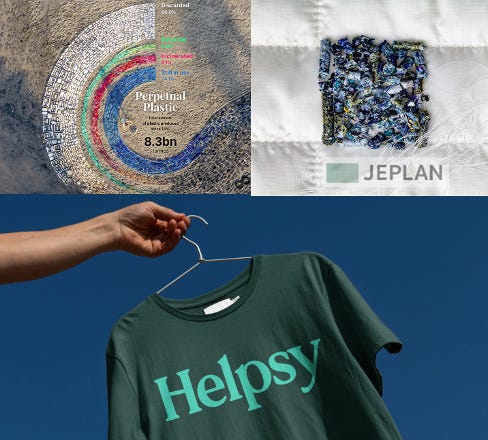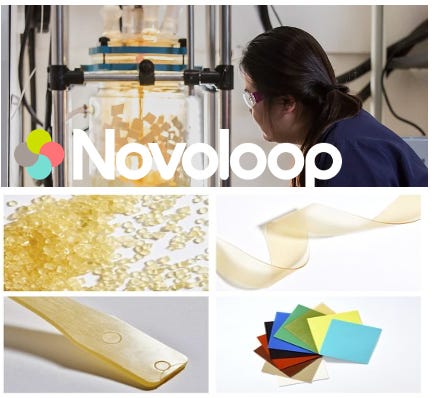#4 reverse logistics
Hidden in Plain Sight: Carbon-negative molecular manufacturing, post-pollution, molecular Recycling.
reverse logistics
When we start with oil as our feedstock things only get more expensive from there. What if someone paid you to use your feedstock so instead of starting at the price of whatever oil costs, a company is starting by getting paid to take waste material at a slight profit and then building on those profits by doing chemical transformations. This isn't just revamping the supply chain; this is rethinking raw materials and waste in an economy of reverse logistics.
trash as raw material
By 2030, we will move from circular & regenerative to exponential solutions, recalibrating new business models for waste. Central to this is making reverse supply chains work with public participation and infrastructure.
A reverse logistics company handles the collection, sorting, and disposal of our waste—from our bodily waste to waste-water treatment plants; Recycled goods to various recycling facilities, and what is difficult to be recycled, like food scraps and used clothing primarily goes to landfills. But that is changing.
Take clothing waste for example: the 100 pounds of clothing Americans ditch every year—that trash is now treasured into new materials. Companies like Helpsy, Jeplan, and Perpetual are trying to figure out how to either stop clothing from going to landfills, turn clothing back into clothing, or turn plastic bottles into clothing.
And they aren't alone. The Ellen MacArthur Foundation champions the best in waste-as-product innovations in its work to accelerate the transition to a circular economy.
The 21st century will turn our trash into the raw materials in the drive towards a waste-free world. The stage has been set—there are viable solutions out there that need to be funded and built. But the real future lies in fusing waste-as-product with waste-as-service—where people become part of the reverse logistics supply chain. Recognizing that waste is central, not peripheral, to everything we design and make is key to transforming the future. Upcycling is one pathway. A successful upcycling program will shift from "pay-as-you-throw" to "reward-as-you-waste" with trash-for-tokens as the incentive. Without the public infrastructure, access to used products for circularity can be challenging. It's not about a circular footprint, but a circular handprint.
More on Reverse Logistics Companies: The Polymerist
carbon negative molecular manufacturing
Look around you—most of the products you use, the clothing you wear, the furniture you sit on, and the gum you chew has been made, in some part, by petroleum. But the newest unicorn in the climate-tech race is about to disrupt that by turning sugar into chemicals, without fossil fuels.
Solugen is creating the world’s first carbon negative molecular manufacturing platform: the Bioforge™. At 10,000 ton per year capacity, the Bioforge is the first manufacturing plant based in Houston, Texas, that manufactures without wastewater discharge or air emissions. It is powered by renewable wind energy.
The Bioforge achieves profitable and carbon negative molecular manufacturing by simultaneously satisfying four parameters: biobased feedstocks, high selectivity, high yields, and high throughput. This enables the Bioforge to convert inexpensive feedstock directly into valuable product molecules while avoiding the formation of waste products.
Solugen has set some big milestones to reach in the next few years, aiming to help reduce the greenhouse gas emissions that the traditional petrochemical industry spews each year—an estimated 925 million tons of CO2 in 2021 alone. While Solugen’s products can actually be carbon negative, it could potentially begin to remove a billion tons of CO2 per year.
SOURCE: Solugen and Fast Company
the post-pollution future
What if we could use carbon emissions to feed to trillions of carbon-hungry microbes that turn our pollution into valuable raw materials? LanzaTech does just that.
LanzaTech’s carbon recycling technology is like retrofitting a brewery onto an emission source like a steel mill or a landfill site, but instead of using sugars and yeast to make beer, pollution is converted by bacteria to fuels and chemicals. Imagine your shampoo bottle is made of emissions from a steel mill—that's just one possibility in a net-zero, carbon-made future.
LanzaTech's vision for a post-pollution world:
It’s not a debate. There’s no two sides. A post-pollution world is inevitable. Humans will either be part of it, or the planet will go on without us. But where others see a dire choice, LanzaTech sees a trillion-dollar opportunity. One that transforms pollution and ensures that humans continue to prosper far into the post-pollution future.
SOURCE: LanzaTech
molecular upcycling
When you throw away polyethylene (plastics), it eventually ends up in the city waste stream and gets sorted at a material recovery facility. But Novoloop sees a new life for waste—it upcycles plastics waste, generating an incentive to keep waste out of landfills, incinerators, or worse, oceans.
Novoloop works with material recovery facilities to source polyethylene waste, the starting material for Novoloop TPU made by upcycling plastic waste. Novoloop TPU is a thermoplastic polyurethane (TPU) made by upcycling plastic waste. TPU is a melt-processable thermoplastic elastomer with high durability, flexibility, and outstanding abrasion resistance.
Co-founded in 2015 by childhood best friends Miranda Yang and Jenny Yao, Novoloop uses patented, low-carbon upcycling technology. These carbons could come from waste, like the six-pack rings that would otherwise float on that beach and harm animals. Those carbons as new building blocks was Novoloop’s first breakthrough. The second: turning these building blocks into high-quality performance materials. And they have done just that in a consortium for On's carbon capture running shoe called Cloudprime—the result of a two year-long joint development, in which both companies invested in creating a TPU made from an unconventional carbon feedstock originating from plastic waste.
“The technology in that shoe sole we made with On is just the start of The Circular Age. It embodies the imagination, ingenuity, and grit of a team that chose to see plastic waste in a new light and took it upon themselves to permanently change the course of plastics for good.
We made the world’s first chemically upcycled TPU outsole. People said it couldn’t be done, just like they say the plastic problem can’t be solved. We know the way, and we’re ready to lead.” —Miranda Yang, co-founder, Novoloop.
SOURCE: Novoloop
Thanks for tuning in.
For more wanderings, become an Alice in Futureland subscriber—it's free.
Invite your friends to this mad tea party and let's see how many things we can learn before breakfast.
©2023 Alice in Futureland









